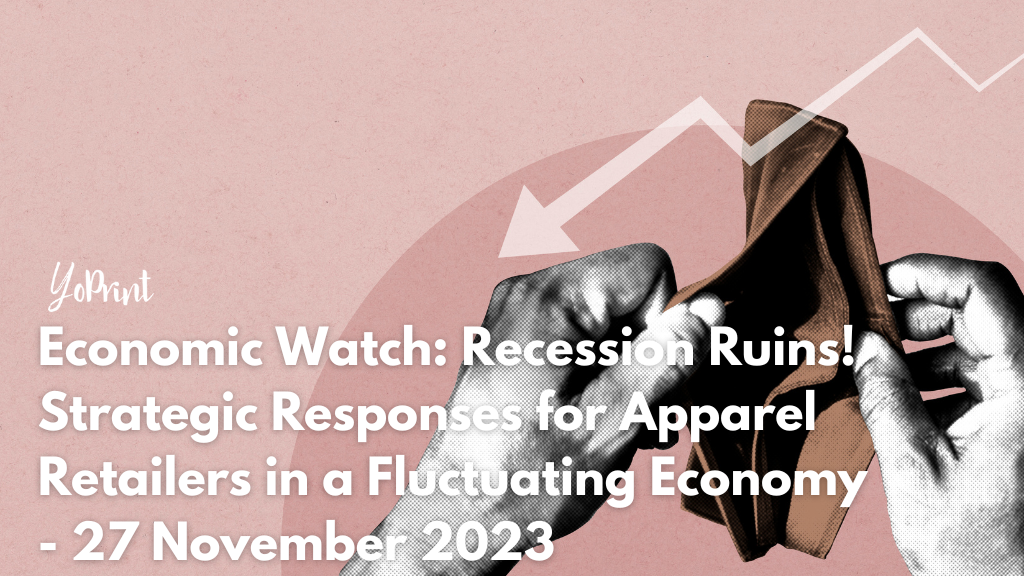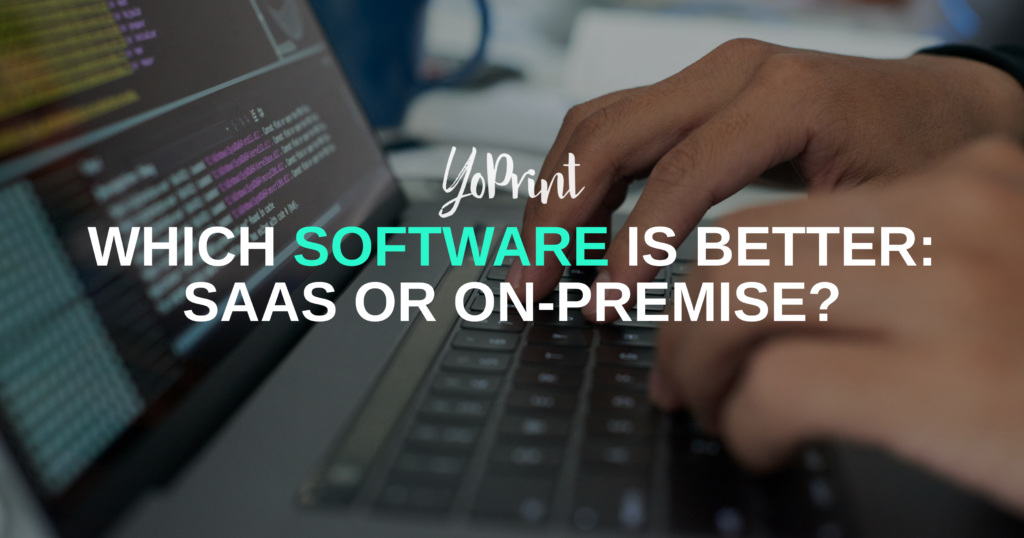- Unemployment rate at an all-time high, which is directly proportional to consumer spending behaviour
- Signs of economic apocalypse: Rise in non-mortgage interest, and more deliquencies
- Foot traffic in physical stores are decreasing, what is going on?
- Luxury goods are not selling as much as before
In the current economic environment marked by uncertainty and changing consumer behavior, apparel retailers are facing a set of challenges that deviates them from not only the noticeable decline in foot traffic, but also a painful observation of rising unemployment and also dynamic shifts in consumer spending, even in the high-end market. The industry is at a crossroads, but how bad can it be? Is an economic apocalypse on the horizon?
Unemployment Hike and Consumer Spending
- Early November surge in unemployment rates directly impacts consumer spending patterns. Consumers will be more conscious on their shopping habits, they will start to hunt more bargains and discounts now more than ever.
- It’s simple. The equation of “no job equals to no money equals to no shopping” underlines the urgency for retailers to reassess their marketing and pricing strategies to remain appealing to a more budget-conscious consumer base.

A recession is likely to have begun when the three-month moving average of the national unemployment rate rises by at least 0.5 percentage points relative to its low during the previous 12 months. The Sahm rule is a clear and straightforward indicator of an economic downfall.
As business owners, the ability to offer a compelling shopping experience that aligns with the new consumer mindset is crucial for business survival. By recognizing the importance of affordability and the pursuit of savings, retailers can navigate these challenging times successfully and foster a loyal customer base.
Interest Hike and Delinquencies: Signs of Recession
- Rising rate of delinquencies has prompted banks to exercise caution, setting aside larger reserves for potential loan losses.
- This conservative approach impacts the broader economy, as reduced lending can lead to decreased consumer and business spending, which is a clear mark of recession.
- Debts like credit cards and car loans have a significant interest spike, which is a deeply worrying sign. As disposable incomes get stretched, consumers are likely to cut back on non-essential purchases, including apparel.
Consumers were spending a lot right after COVID, but not anymore. We believe spending on discretionary products by our consumer demographic is being pressured by many factors, particularly in the US, including persistent inflation compounded by higher interest rates, reduced savings and significant uncertainty in the macroeconomic and geopolitical climate”.
Mike Karanikolas, Revolve Group
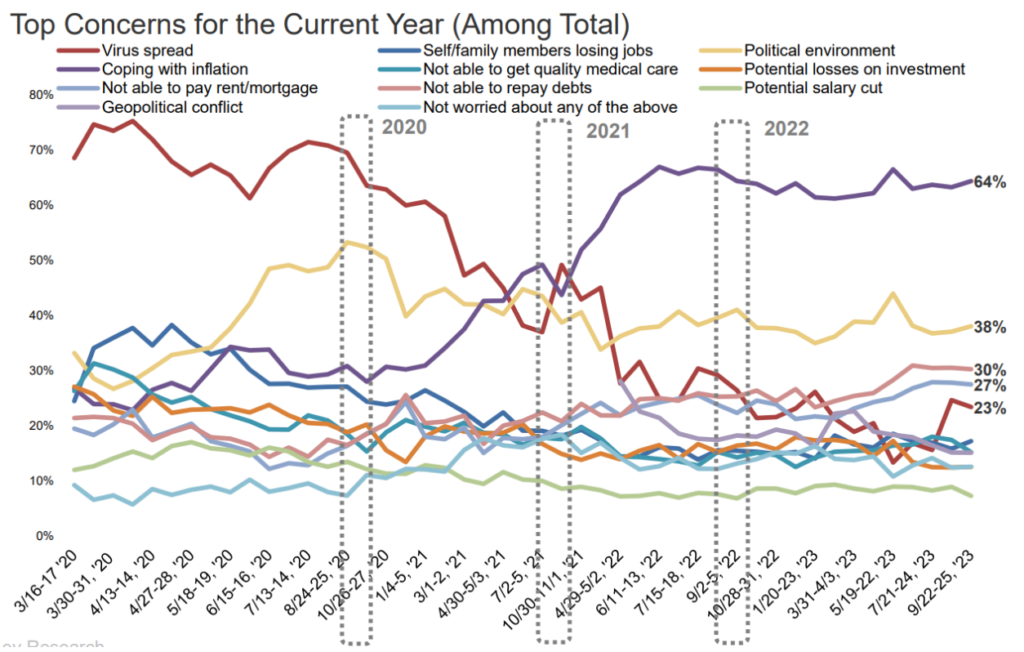
- Low-income consumers are generally more worried about the inability to pay rent, while upper income consumers over index on concerns about their investments, the political environment in the U.S. and geopolitical conflicts.
Core Retail Sales Slowdown

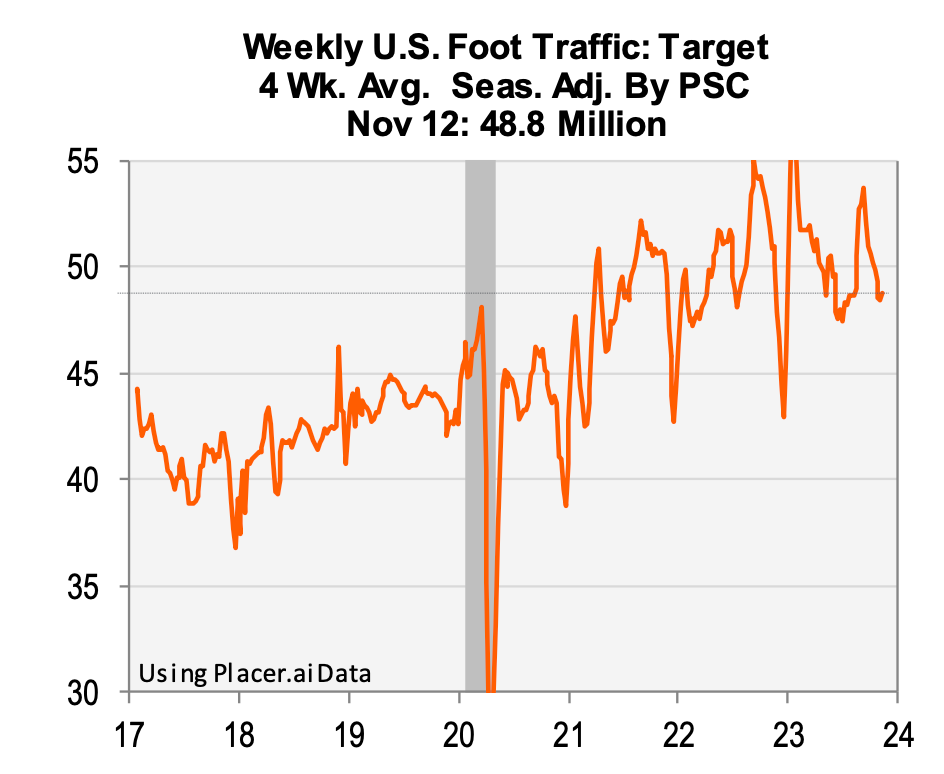
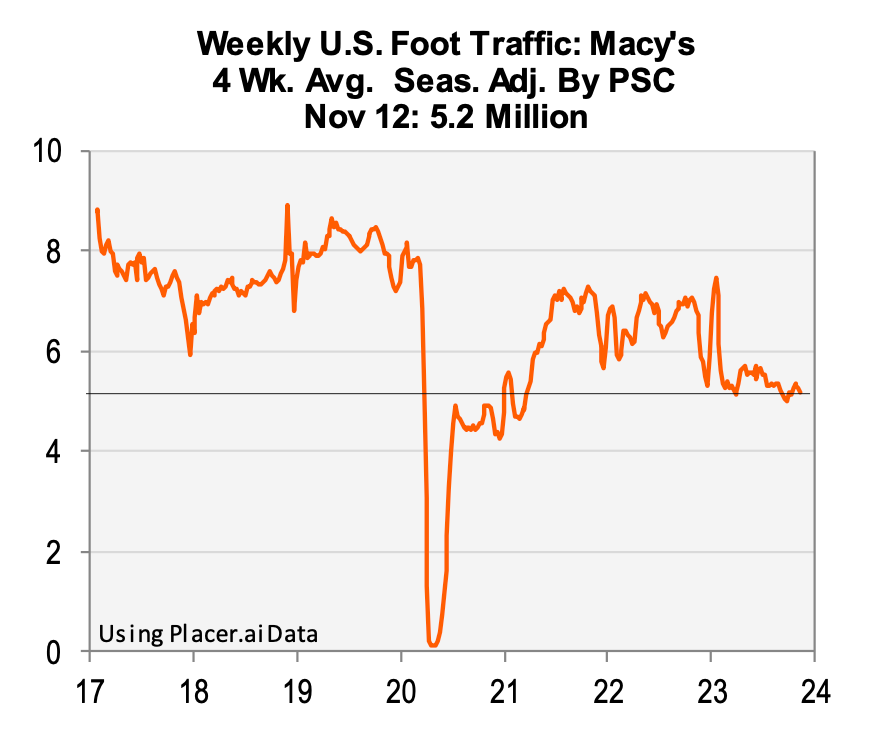
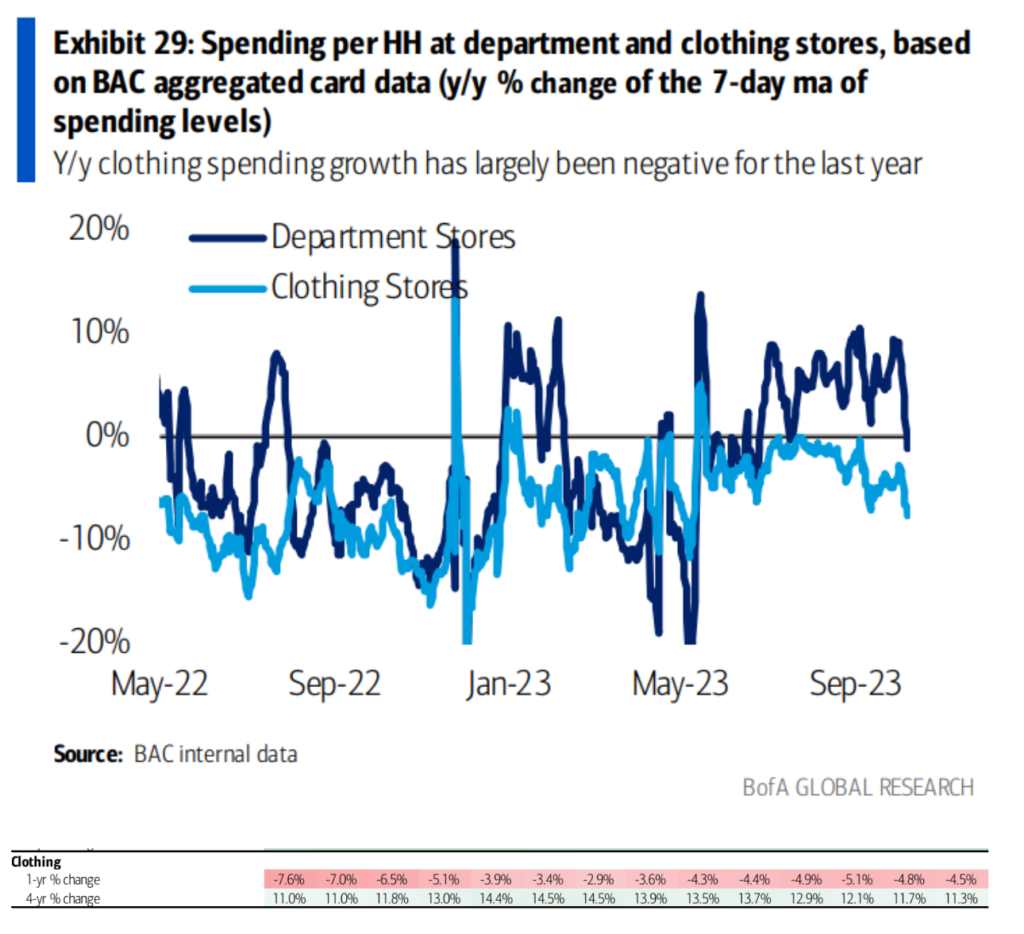
- Recent data indicates a noticeable decline in foot traffic and nominal core retail sales, a trend that suggests a reduction in walk-in customers in retail stores.
- This slowdown is a crucial indicator of changing consumer behavior and warrants a strategic response from retailers.
Are consumers buying more stuff online post COVID-19? Or are they just simply not doing more shopping? The answer to this trend could be attributed to various factors, including economic uncertainty and the evolving digital shopping landscape. Consumer buying power has weakened and could take some time to recover.
Luxury is in trouble!
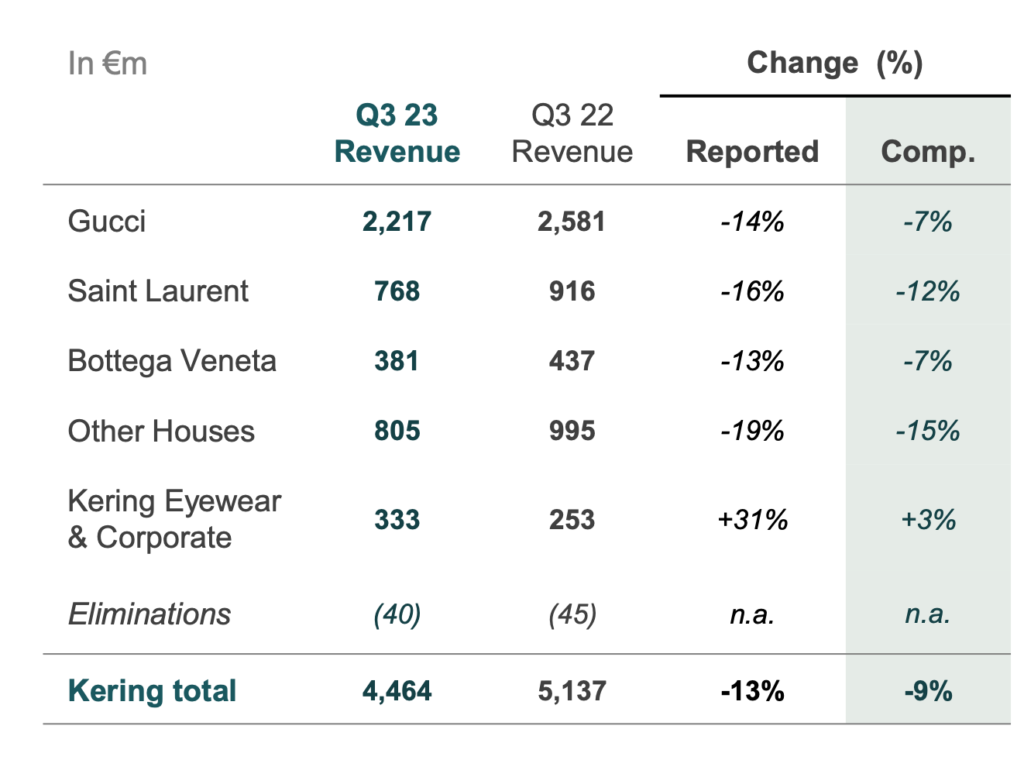
source: kering.com
- Luxury retailers are not immune to these economic shifts. There has been a marked retreat among high-end consumers, leading to a dip in luxury retail sales. This trend could reshape the product assortments and marketing strategies of premium brands.
- Kering’s brands’ growth in North America in Q3 is in the negatives.
- Gucci, Saint Laurent, Bottega Venetta, and even other houses, were all negative.
- Their wholesale revenue in Q3 was between -17% to -38% for each house and this is indeed if put in two words, VERY POOR.
“We were betting on mid-single digit growth, and you can guess given the performance in third quarter and what is happening in the market, this won’t be the case. We expect dilution of the [earnings before interest and taxes] margin for the full year compared to last year.”
Jean-MarcDuplaix, Kering
Industry Trends and Suggestions
It is extremely vital for business owners, big and small to accommodate the consumer’s behaviour and patterns and adapt it to their business modules to try and at least sustain in the pressures of a deeply fluctuating economy, if not to grow bigger and better when the tides have slowed down. What can be done? It is indeed a depressing time, but it is certainly not the end. Strategies and tactics must be implemented in order to survive the tide.
- Introduce more affordable product lines to cater to budget-conscious consumers.
- Offer flexible payment options like buy-now-pay-later to make purchases more accessible.
- Consider the weather impact. The unusually hot weather has impacted brands like Levi’s, leading to a prolonged season for summer apparel. Retailers might consider extending the availability of lighter, summer-style clothing into the fall.
- Go back to basics! Adidas’ Terrace trend which offers practicality and comfort, Ralph Lauren’s shift towards casual wear, and GAP’s focus on basic, evergreen styles suggest that the consumer’s eyes are on basic apparel.
- Businesses are going back to basics. Focus on leveraging cultural movement in your product lines, tap into style preferences that are timeless and classic, expanding it into broader fashion and lifestyle segments.
- The enduring popularity of items like Gildan’s fleece and Nike’s Fleece Tech indicates a robust market for cozy, versatile clothing. Continuing to offer fleece items could capitalize your business on this trend.
In these times of uncertainty, the apparel industry stands at a crossroads, facing the headwinds of economic and geopolitical turbulence. Retailers must navigate this challenging landscape with prudence and adaptability. It is crucial to steer clear of high-risk ventures that demand substantial cash investments. Instead, the focus should shift towards evergreen and comfort-centric fashion choices, aligning with enduring consumer preferences.
Retailers must remain nimble, adapting pricing and marketing tactics to resonate with the evolving patterns of consumer expenditure. Keeping a vigilant eye on economic indicators and trends is more important than ever. This period demands not just cautious navigation but also strategic foresight. The ability to quickly adapt and respond to market changes will define the success of apparel retailers as they sail through these unpredictable and often stormy economic seas.
